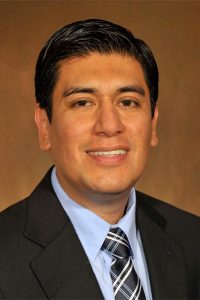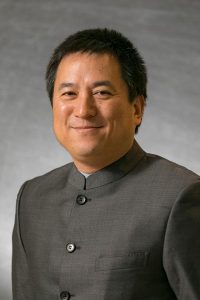Power grids are strategically important for the economic development of any nation. A more robust grid implies improved reliable electricity delivery with fewer blackouts. Research advancements in this area could help to reassure the public and diminish negative economic consequences caused by major blackouts. They could also help to facilitate environmentally-friendly power production leading to fewer public health problems caused by local pollution from fossil fuel power plants.
For their research into improving the performance of the national power grid and, in particular, how to make it more robust, Assistant Professor Hector Pulgar and James W. McConnell Professor Fran Li have recently been awarded a grant by the National Science Foundation.

Hector Pulgar

Fangxing “Fran” Li
Robustness refers to the grid’s ability to tolerate changes in electricity consumption by customers and to withstand disturbances such as failures, induced either by weather conditions or human error, while keeping the grid’s vital signs, voltage and frequency, in acceptable ranges.
“Think of an athlete who must perform a task,” said Pulgar. “Ideally, the task must be perfectly executed, while keeping the athlete’s vital signs such as heart rate or blood pressure in acceptable ranges. As our nation’s economy is highly dependent on electricity, we must have a grid that performs as a top athlete and not as an amateur who might faint after the first try because his/her vital signs are out of range. For the grid, fainting means that electric devices from residential or industrial users would not work properly as the grid struggles to supply energy, with the risk for the grid to supply no energy whatsoever, such as blackouts.”
While it is a well-established system, the power grid is not as robust as one might expect. Since its inception in the late 19th century, the power grid has operated mainly based on fossil-fuel power plants. For more than a century, these power plants provided sufficient control of the grid and added robustness through their heavy rotating masses.
Pollution caused by the use of massive amounts of fossil fuels has been a big concern. Because of this, more and more renewable generating sources, such as wind or solar energy, have been introduced into the grid. While wind and solar are good options for helping to reduce pollution, these sources do not do much to increase the durability of the grid.
To overcome this problem, scientists and engineers have developed new ways to control wind and solar sources that could help increase the grid’s ability to withstand changes. These new types of controllers have also been proposed for energy storage systems or other modern components, such as DC transmission lines. There is now and will be an increasing number of new controllers in the power grid; they, together with those from existing power plants, will try to increase the hardiness of the grid. However, there is a concern that with such a large number of components trying to simultaneously assist the grid, there is no guarantee of a positive outcome without coordination of their actions. Imagine, for a moment, two men attempting to move a couch. If they pull in opposite directions, they will go nowhere, so some coordination must be in place to move it. For the grid, this problem becomes more complicated, as the number of controllers is large and the nature of their forces is diverse.
Consequently, Pulgar’s and Li’s project aims to increase the durability of the grid by coordinating these large numbers of diverse control mechanisms. They are proposing this coordination can be done in an adaptive and optimal fashion, in real-time.
They have laid out the theoretical foundations for solving this coordination problem and provided the evidence. If the coordination problem is not evaluated properly, negative consequences may emerge, even to the point of power outages across the grid.
“To develop the foundation of the coordination problem, some assumptions were needed,” Pulgar said. If at any given time the assumptions are not valid, the coordination cannot be solved optimally. Still, we expect that at least this theoretical solution can provide some guidance. Another barrier for a practical implementation in the actual power grid is the need for performing very heavy calculations in a short period of time.”
Pulgar continued, “Our project will tackle these issues by developing artificial intelligence. By streaming measurements from different points in the grid, and initially using our theoretical solution as guidance, a central process will learn from the grid behavior. After many tries, the central process will be properly tuned and will be able to determine the optimal coordination for the controllers across the grid.”